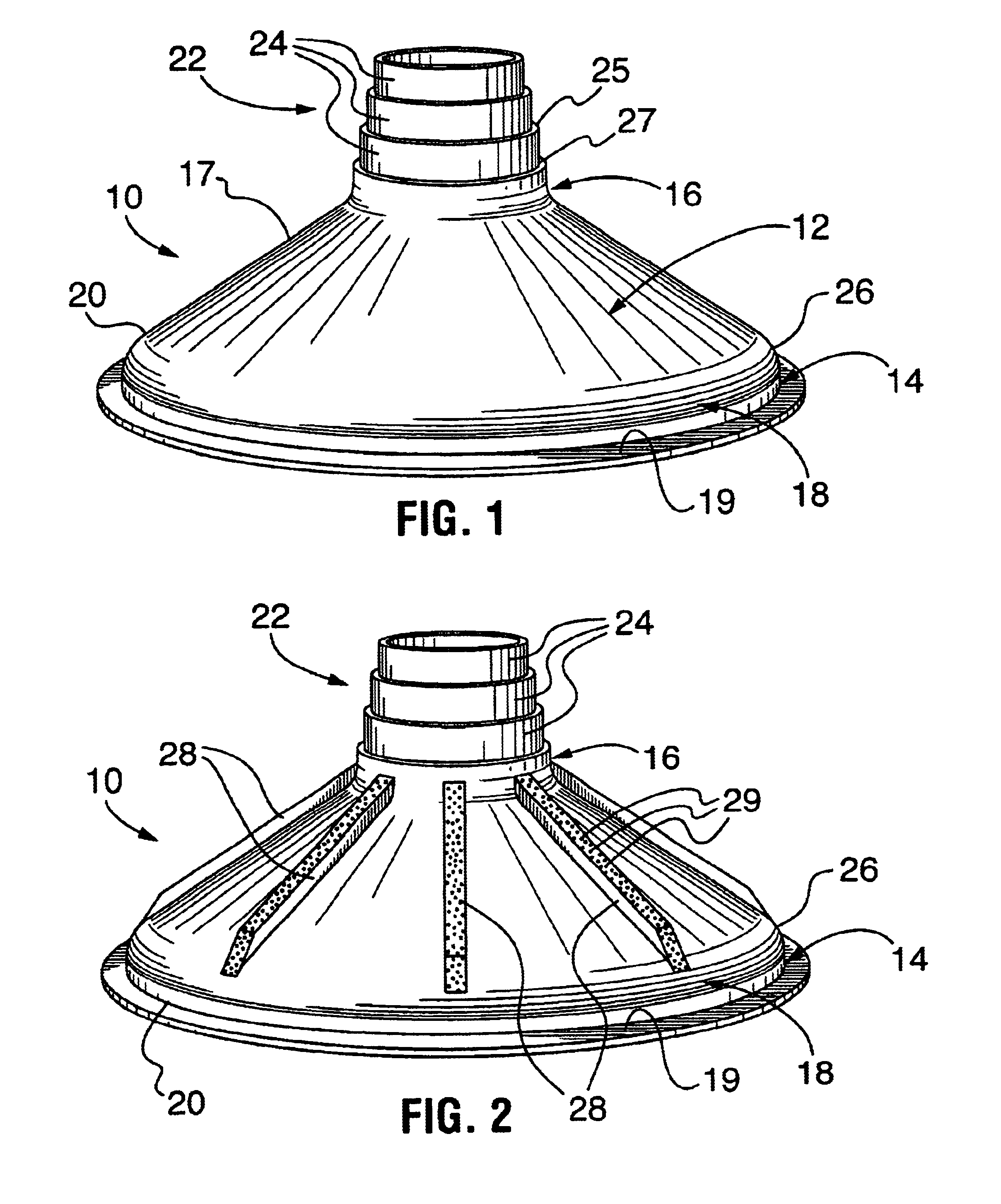Footing form
a footing and form technology, applied in the field of concrete forms, can solve the problems of impracticality, high material cost, and certain structural limits of tapered prefabricated forms, and achieve the effect of preventing the hazard of open trenches and small heigh
- Summary
- Abstract
- Description
- Claims
- Application Information
AI Technical Summary
Benefits of technology
Problems solved by technology
Method used
Image
Examples
Embodiment Construction
Despite the structural limitations taught in the prior art, it has now been surprisingly found that a form having a sidewall angle below 45° will reliably fill with a concrete mixture of at most about 3000 psi, as long as other structural limitations of the form follow certain strict relationships. Through extensive research, the applicant has developed certain structural relationships which, if strictly followed, allow the manufacture of prefabricated forms that will still reliably fill with a concrete mixture of up to 4500 psi, despite a sidewall angle below 45° and even as low as about 30°, and without vibration of the concrete. However, if these structural limitations as developed in accordance with the invention are not followed, the form may not fill properly, or even more disastrous results may occur, such as cave-in of the form.
FIG. 1 shows a perspective view of a first embodiment of a prefabricated footing form 10 in accordance with the invention. The prefabricated form 10 ...
PUM
 Login to View More
Login to View More Abstract
Description
Claims
Application Information
 Login to View More
Login to View More - R&D
- Intellectual Property
- Life Sciences
- Materials
- Tech Scout
- Unparalleled Data Quality
- Higher Quality Content
- 60% Fewer Hallucinations
Browse by: Latest US Patents, China's latest patents, Technical Efficacy Thesaurus, Application Domain, Technology Topic, Popular Technical Reports.
© 2025 PatSnap. All rights reserved.Legal|Privacy policy|Modern Slavery Act Transparency Statement|Sitemap|About US| Contact US: help@patsnap.com



